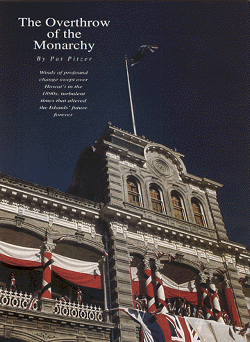
`Iolani Palace , bedecked in Hawaiian flags for King Kalakaua's birthday celebration, proudly recalls the days of Hawai`i's monarchy. (Photo by Brett Uprichard)
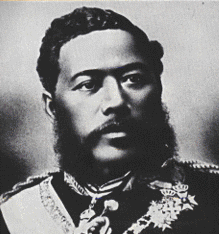
King Kalakaua was forced to sign the Bayonet Constitution in 1887, sharply curtailing his powers and diminishing the Native Hawaiians' voice in government. (Hawai`i Visitors Bureau)

Lorrin Thurston , grandson of American missionaries, was the firebrand behind the revolution against the Hawaiian Monarchy. (Hawai`i State Archives)
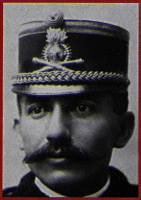
Robert Wilcox led an insurrection in 1889 against the Bayonet Constitution and a counterrevution in 1895 attempting to restore the queen to the throne. (Hawai`i State Archives)
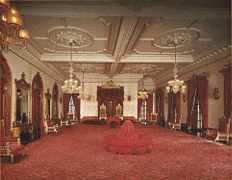
The palace's throne room , once the scene of grand royal balls, later stripped bare as a military court room where Lili`uokalani was tried on treason-related charges, today is once again restored to its former splendor. (Milroy/McAleer for the Friends of `Iolani Palace)
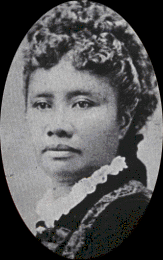
Queen Lili`uokalani yielded her throne under protest, trusting the American government would right the wrong done to her people when U.S. troops backed the revolutionaries. (Hawai`i State Archives)
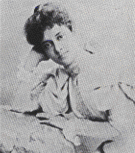
In 1899, six years after the monarchy was overthrown, Princess Ka`iulani , heir to the lost throne, died at age 23. (Bishop Museum)

Sanford Dole , who had favored a regency holding the throne in trust for Princess Ka`iulani rather than abolishing the monarchy, became president of the provisional government that replaced it. (Hawai`i State Archives)
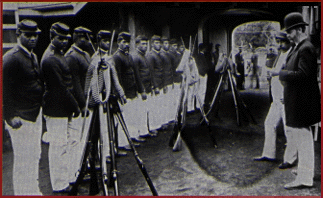
After the queen yielded her authority on Jan. 17, 1893, her Royal Guards surrendered their arms at the palace barracks. (Hawai`i State Archives)
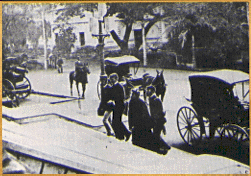
Lili`uokalani is escorted by guards up the steps of the palace, where she was imprisoned after a cache of arms was found in her garden during the counterrevolution of 1895. (Hawai`i State Archives)
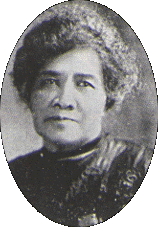
A queen to the end to her people, Lili`uokalani died in 1917, her plea for justice unanswered." (Hawai`i State Archives)
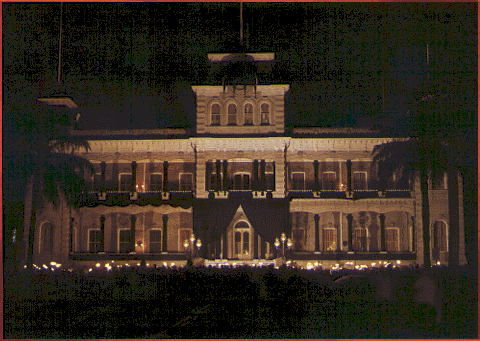
`Iolani Palace , draped in black for last year's observance of the centennial of the overthrow of the monarchy, was a moving, powerful symbol to Hawaiians who participated in a torchlight ceremony.
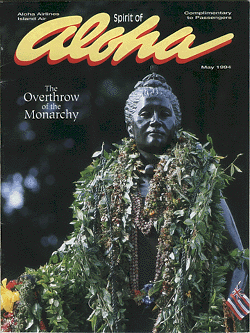
 Return to the Hawaiian Independence Home Page or the
Return to the Hawaiian Independence Home Page or the 











